|
HOME: www.hiltonpond.org |
|||
THIS WEEK at HILTON POND Subscribe for free to our award-winning nature newsletter (Back to Preceding Week; on to Next Week) |
EARLY JUNE MISCELLANY 2015 Although Rodgers and Hammerstein said "June is bustin' out all over," the sixth month of the year sometimes seems a little slow. The big burst of spring activity following a long winter has passed by, and the riot of color from early wildflowers and migrant birds is over as things settle down in advance of summer heat. By now many local resident songbirds have already fledged their first brood and have a new clutch of eggs; neither females (that are incubating again) nor males (that may be tending that first set of fledglings) are very active, and feeder activity is greatly diminished as birds take advantage of an ever-more-plentiful bounty of bugs. Even the air seems quiet, with little breeze and few mating calls from frogs, insects, or birds--although the summer cicadas should be cranking up any day now. Despite this seeming decline in activity, there's still plenty going on in the world of nature at Hilton Pond Center during the first half of June.
All text, maps, charts & photos © Hilton Pond Center The first of this year's fledgling Northern Cardinals showed up beneath Hilton Pond Center's big sunflower tube feeders a couple of weeks ago, but none entered our traps until 9 June. We caught two that day, both males (including the one in the photo above). All young NOCA start out looking like females; as shown--males soon start bringing in those more familiar red feathers of the adult. Note also the poorly formed crest and rough appearance of this young bird's juvenal plumage. It takes a while longer--and a lot of carotene pigment--for a fledgling's dark mandibles to turn bright reddish-orange. (The outer bill surface is dead material like your nails, but underlying that is living tissue that takes up the carotene pigment.) The male's full black mask will take several weeks to become complete.
All text, maps, charts & photos © Hilton Pond Center Nearly all Ruby-throated Hummingbirds we're now capturing at the Center have dustings of yellow pollen on their foreheads and crowns. This is a sure sign Trumpet Creeper vines started blooming right on cue, their 4" bright orange tubular blossoms offering copious amounts of energy-rich natural nectar just when female hummers can use it to feed nestlings.
All text, maps, charts & photos © Hilton Pond Center In our judgment Trumpet Creeper, Campsis radicans--incorrectly called "Trumpet Vine" by some--is the single most important hummingbird flower in the eastern U.S.; it blooms around Hilton Pond from late May through early September. Some gardeners don't like Trumpet Creeper because it can get a little rambunctious, but plant it on a trellis or at the base of a big tree and you'll soon have your very own "hummingbird magnet"--a natural competitor for your 1:4 sugar water feeders.
All text, maps, charts & photos © Hilton Pond Center In late May an industrious pair of Carolina Wrens started hauling leaves sticks, and other dead vegetation onto the top of a porch column of the old farmhouse at Hilton Pond Center. In a single day they completed the architectural marvel in the photo above! (Keep in mind the porch pillar is 9" in diameter.) We wondered if this structure was a dummy nest that wrens sometimes build, so it was simply a matter of waiting until this week when we discovered the female was sitting on five brown speckled eggs that should hatch any day now.
All text, maps, charts & photos © Hilton Pond Center Even though Goldenrod flowers depicted in the photo above won't be blooming until late summer, native nectar-eaters such as Bumblebees, Hoverflies, and various moths and butterflies are already serving their all-important role as pollinators of wild plants and agricultural crops. Hilton Pond Center created the poster above as a reminder we humans need to protect native pollinators by greatly reducing use of herbicides, pesticides, inorganic fertilizers, and other chemical compounds that poison the earth--and us! (Note: Feel free to copy and distribute the poster as you wish. Spread the word!)
All text, maps, charts & photos © Hilton Pond Center We have so many interesting experiences at at Hilton Pond Center we have trouble picking favorites, but something that occurred on 10 June may well end up being tops for the year. While out checking our traps and mist nets we saw movement around a nest box that in May fledged seven Carolina Chickadees. We had examined the artificial cavity just that morning and noticed some a new deposit of fresh green moss--something bluebirds don't use--so we figured a different species had moved in. Having our boxes occupied is always a pleasant occurrence, of course, but when we saw a bright yellow bird burst from the nest hole we were ecstatic. Cavity nester? Yellow? Around these parts that could mean only one species: Prothonotary Warbler!
All text, maps, charts & photos © Hilton Pond Center For years we had a nest box down by the lower impoundment--we call it "Not Hilton Pond"--to attract these birds, but visiting PROW never took advantage. The bird on the backyard box was a brilliantly plumaged male, seen carrying another batch of moss the following day (see photo just above).
All text, maps, charts & photos © Hilton Pond Center In a net just behind the artificial cavity we managed to capture the male Prothonotary Warbler (above). His overall plumage and somewhat ragged tail indicated he was likely a second-year bird that fledged in 2014.
All text, maps, charts & photos © Hilton Pond Center Although we never saw a female PROW, we had hoped to have warbler eggs in the nest box; such was not the case when we found one pale blue Eastern Bluebird egg on 11 June, complete with a new sprig of moss on top. Later in the day (upper left photo, above) the moss was rearranged and matted down into a cup, and much to our disappointment we never again saw the male Prothonotary Warbler again. (We did erect a second nest box a few feet away from the first one in the hope of attract a PROW pair, but nothing has occupied it to date.) On 12 June, however, there was a second bluebird egg (upper right photo), followed by one more on each of the two days following (bottom two photos, above).
All text, maps, charts & photos © Hilton Pond Center The eggs were still cold on 14 June--meaning incubation had not yet begun--but the next day they were warm and we snared a female bluebird as she exited the nest box. Her numbered leg band (2661-03521) indicated Ernesto M. Carman had helped us band her locally as a second-year bird six weeks previous on 24 April 2015. At that time she already had a well-developed brood patch--indicating she was caring for eggs or chicks (or even recent fledglings). The evidence is strong this current clutch is her second of the year with plenty of time this breeding season to go for three.
All text, maps, charts & photos © Hilton Pond Center We also captured the male Eastern Bluebird (above). Although he was unbanded, he most likely has been with the banded female for all of 2015. EABL often demonstrate long-term (even year-to-year) pair bonds. Nonetheless, male bluebirds guard their mates, lest some competitor try to sneak in for an extra-pair copulation. In some cases a family unit consisting of the two parents and their many fledglings will spend fall and winter flocking together before dispersing the following spring.
All text, maps, charts & photos © Hilton Pond Center Mist nets around the bluebird box didn't catch a lot of birds, but those that did get snared were sorta special. The male Prothonotary Warbler, for example, was just the 18th of his species captured at the Center in 34 years. Almost as uncommon was our 27th Hairy Woodpecker, a somewhat bedraggled male (above) that appeared worn out--perhaps from tending to a hungry crop of nestlings. A shown, the stout bill in hairies is more than twice the length of the head, differentiating them from smaller and more prevalent Downy Woodpeckers whose chisel-like mandibles are much shorter.
All text, maps, charts & photos © Hilton Pond Center A third uncommon bird we managed to net was an immature Louisiana Waterthrush--just our 47th since 1982. As its name implies, this species is more southerly in distribution than Northern Waterthrushes. Having banded this youngster and female LOWA with brood patches in past years we're almost certain the species breeds at Hilton Pond Center, even though we've never been able to find a nest. Incidentally, Northern Waterthrushes are somewhat smaller than their southern congeners, have buffier eye lines, and bear streaks on their throats. Compare that to the pristine throat of the Louisiana Waterthrush above. (NOTE: We actually caught two LOWA during the period--both recent fledglings.) All text, maps, charts & photos © Hilton Pond Center On 16 June we caught our 100th House Finch of 2015 at the Center. This might seem like a lot but it's nowhere near where we'd been by this date in most previous years--nor is it close to the 34-year average of 280 HOFI banded for a 12-month period. As the chart above shows, this species has been in more or less steady decline locally since our biggest years in the early 1990s, when an epidemic of mycoplasmal conjunctivitis began taking a heavy toll.
All text, maps, charts & photos © Hilton Pond Center Although this highly contagious and sometimes fatal eye disease can affect optical membranes of many kinds of birds, House Finches seem especially susceptible--and they're not very pleasant to look at (above). About 25% of recently fledged HOFI we've banded this year at Hilton Pond Center had conjunctivitis, implying two things: 1) They got infected in the nest; 2) Their parents were carriers of but not victims to conjunctivitis bacteria. You can help stop the spread of the disease by using a mild bleach solution weekly to clean feeders--especially tube types in which feeding holes may come in contact with birds' eyes. (And don't forget to clean your bird bath!) All text, maps, charts & photos © Hilton Pond Center
Checks can be sent to Hilton Pond Center at: All contributions are tax-deductible on your |
|---|
|
"This Week at Hilton Pond" is written and photographed by Bill Hilton Jr., executive director of Hilton Pond Center for Piedmont Natural History
|
|
|
Please refer "This Week at Hilton Pond" to others by clicking on this button: |
Comments or questions about this week's installment? Send an E-mail to INFO. (Be sure to scroll down for a tally of birds banded/recaptured during the period, plus other nature notes.) |


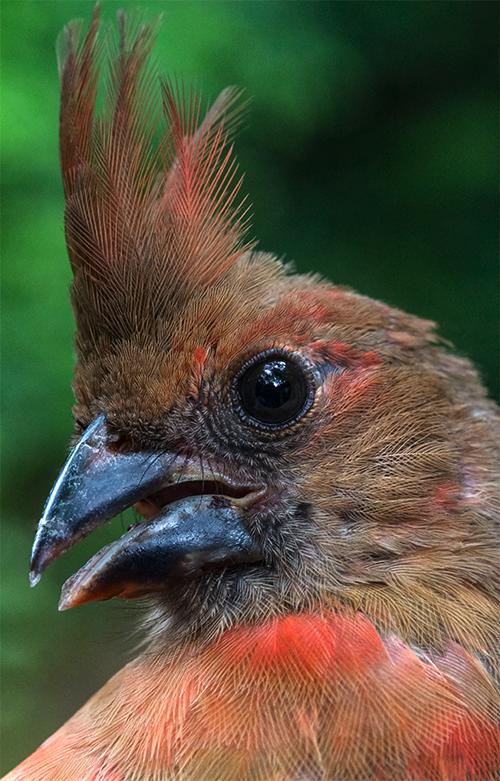
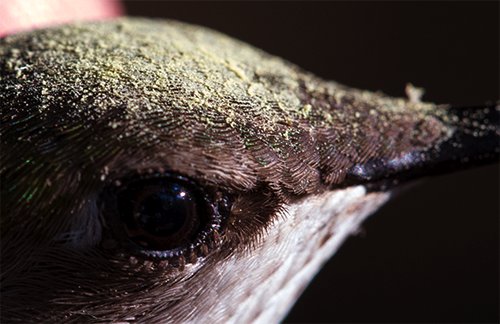
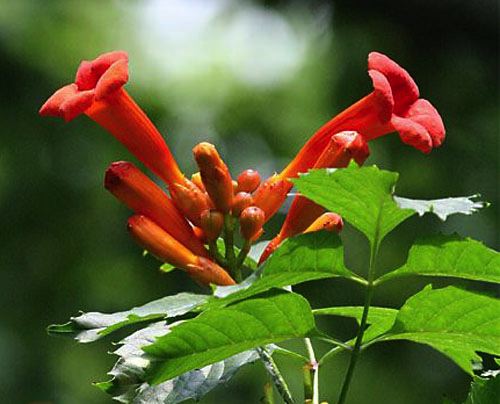
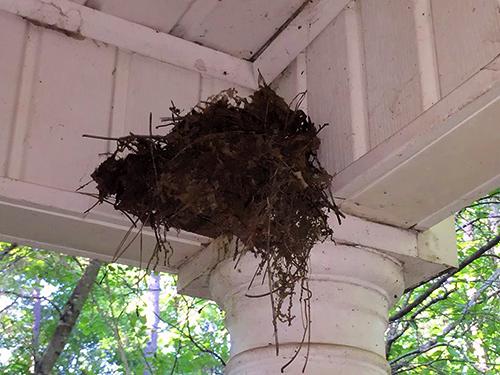
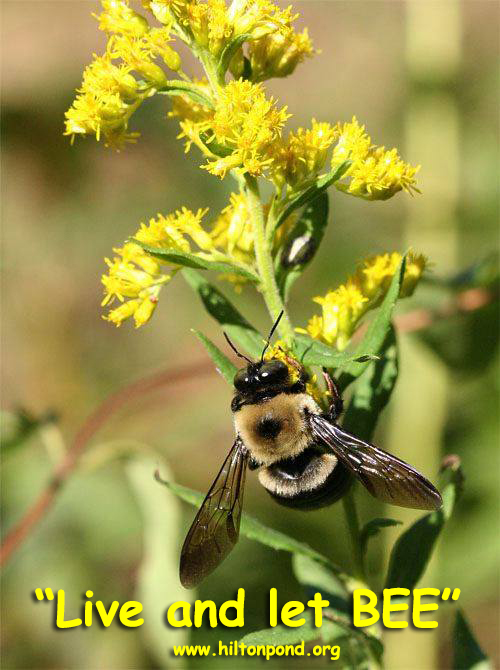
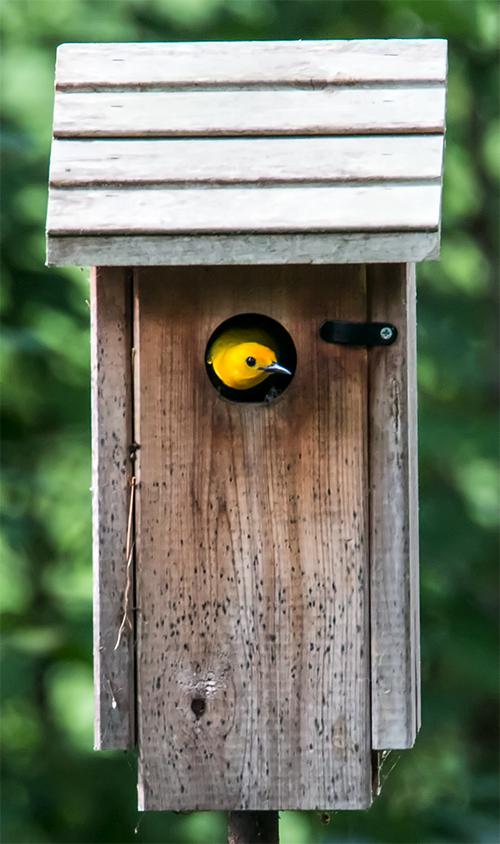
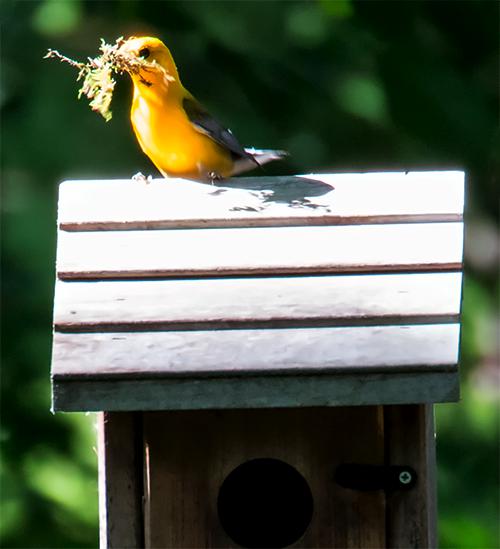
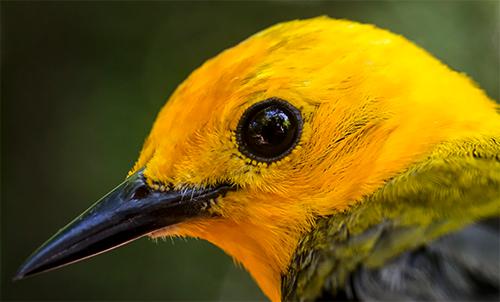
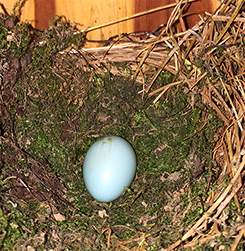
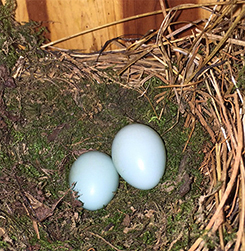
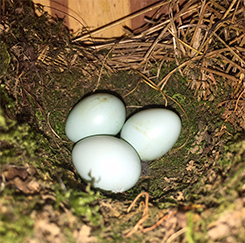 .
.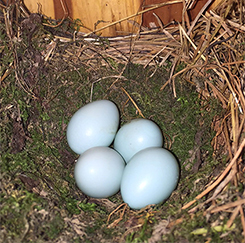
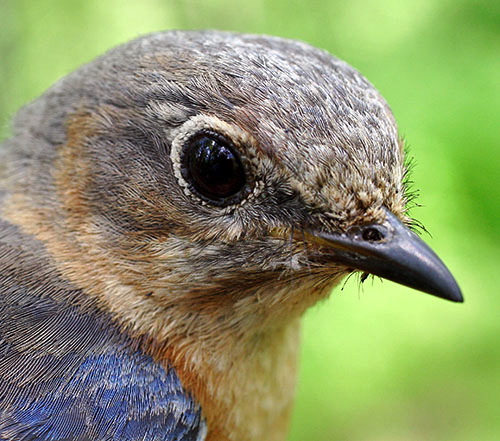
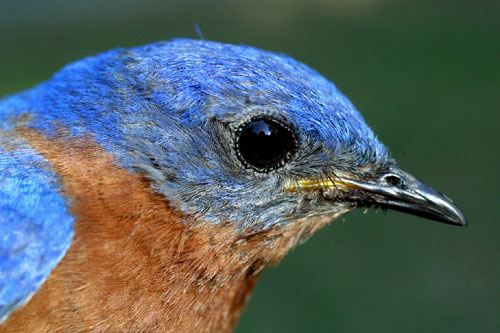
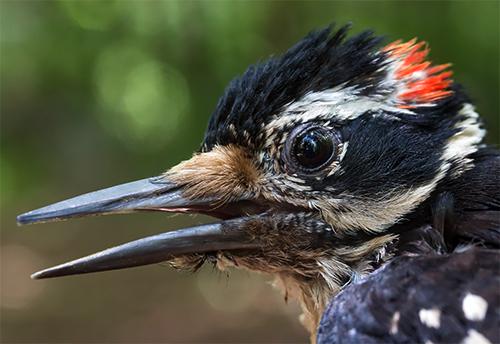
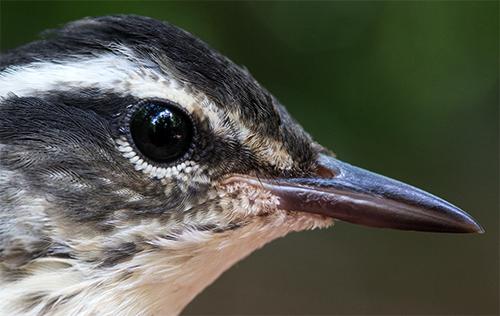
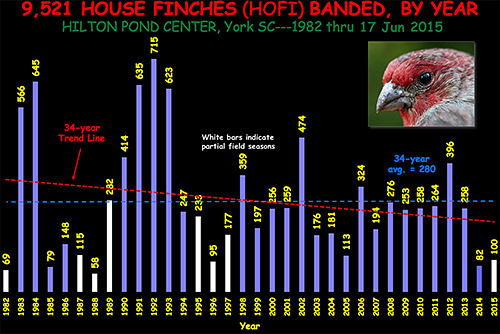
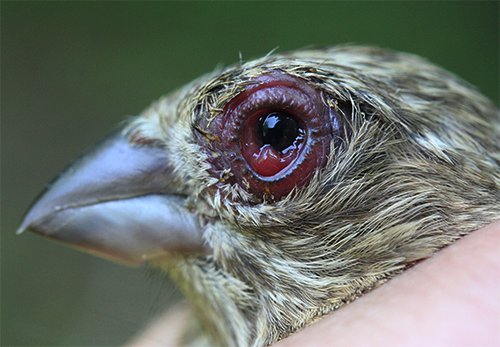









 Please report your
Please report your